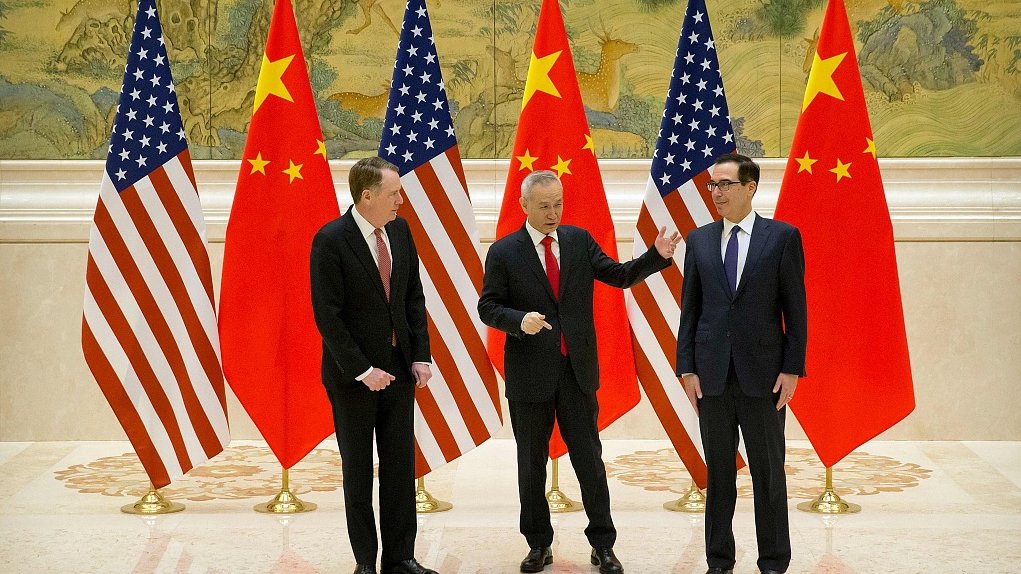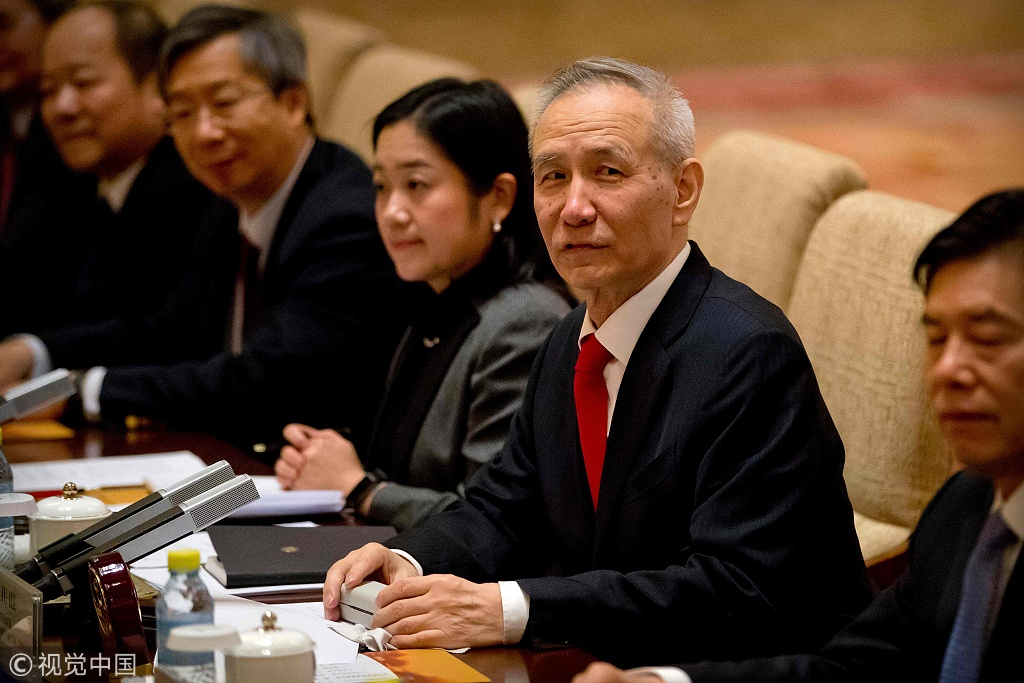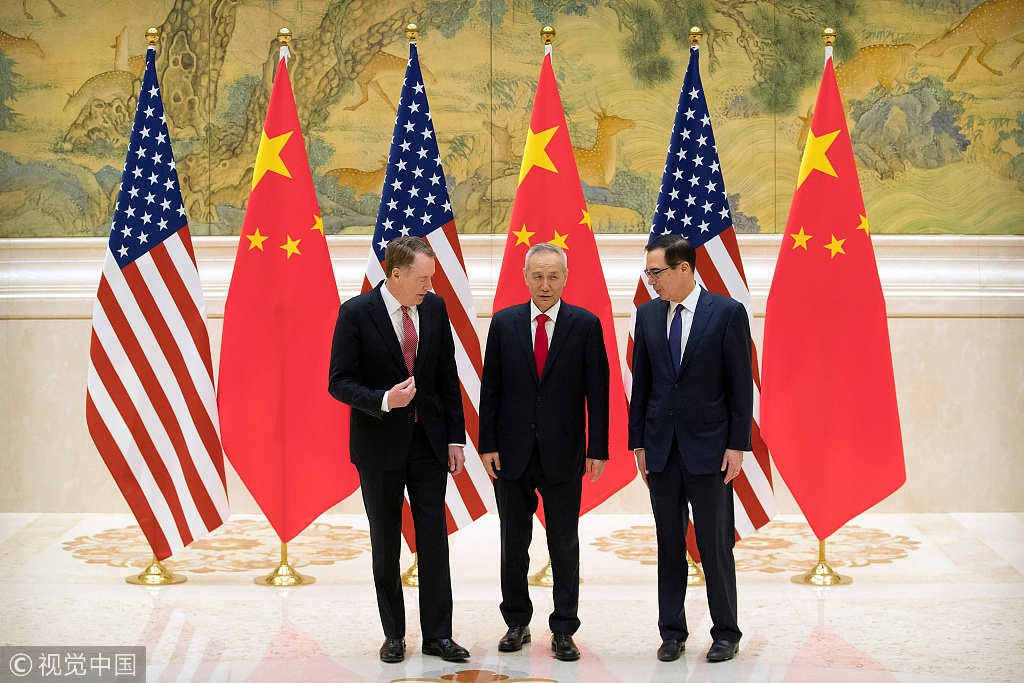
Opinion
21:20, 21-Feb-2019
U.S. must distinguish China prejudices from its core interests
Liu Jianxi

The world's two largest economies are outlining commitments in principle on the stickiest issues in their seven-month trade fight, which, according to Reuters, is the “most significant progress” so far in the months of on-again-off-again talks.
Negotiators are drawing up six memorandums of understanding on structural issues. These are meant to end the practices that led U.S. President Trump to levy duties on Chinese goods in the first place, according to a Reuters report.

Chinese Vice Premier and lead trade negotiator Liu He (2nd R) at the opening session of trade negotiations with US trade representatives at the Diaoyutai State Guesthouse in Beijing, February 14, 2019. /VCG Photo
Chinese Vice Premier and lead trade negotiator Liu He (2nd R) at the opening session of trade negotiations with US trade representatives at the Diaoyutai State Guesthouse in Beijing, February 14, 2019. /VCG Photo
With the clock ticking to the March 1 deadline, both China and the United States struck an upbeat note on the prospect of a fundamental trade deal. “Big progress” is being made on “so many different fronts” in the trade talks, Trump said last week.
But still, challenges can never be underestimated. To begin with, Trump's capriciousness is not something new. It is true that the businessman-turned president, as CGTN indicated in a previous article, has the intelligence to distinguish the art of deal from Washington's fundamental interests, and Trump's capriciousness, in most cases, is an attempt to win more leverage at the negotiation table.
But Washington's trade war policy is not determined by the president, but a collective decision by the GOP. Some of Trump's hawkish aides have been obstinate in their hostility against China. This is the major reason for Trump's contradictory rhetoric on his plan to meet Xi and the March 1 deadline. Divergences within the White House mean that Trump's China policy may be easily swayed by his hardline colleagues.
Earlier, Trump told reporters that March 1 “is not a magical date,” indicating that Washington may not raise tariffs on Chinese goods on the scheduled deadline. But U.S. Trade Representative Robert Lighthizer has repeatedly voiced opposition to an extension. “The deadline is March 1. That is the deadline,” Lighthizer reportedly said. Odds between Trump and his advisors may add more uncertainties to the prospect of a trade deal.
The White House must be clear that the utmost purpose of the trade negotiations is to create a friendlier atmosphere for future Sino-U.S. trade, not to contain China or to force structural changes in a socialist country. Beijing has already made considerable concessions including additional purchases of American soybeans and other agricultural products and is willing to carry out reforms that conform to the country's interests.

(From L) U.S. Trade Representative Robert Lighthizer, Chinese Vice Premier and lead trade negotiator Liu He and U.S. Treasury Secretary Steven Mnuchin talk before the opening session of trade negotiations at the Diaoyutai State Guesthouse in Beijing, February 14, 2019. /VCG Photo
(From L) U.S. Trade Representative Robert Lighthizer, Chinese Vice Premier and lead trade negotiator Liu He and U.S. Treasury Secretary Steven Mnuchin talk before the opening session of trade negotiations at the Diaoyutai State Guesthouse in Beijing, February 14, 2019. /VCG Photo
The combination of planning and market is in China's economic DNA. It is not upsetting the principle of fair trade and thus the United States must learn to live with it. In less than 10 days before the March 1 deadline, anti-China politicians must learn to distinguish their selfish stereotypes against the socialist country from Washington's core interests.
Apart from prejudices against China's system, American concerns about Beijing's implementation of existing consensus are another factor casting a shadow on the prospect of the trade deal. As long as the deal is mutually beneficial, why don't the two sides implement it? The trade war is not a win-or-lose scenario. The world's largest two economies should have the wisdom and determination to clinch a multi-win deal. This is the fundamental solution to American concerns about the enforcement of the deal.
The Diplomat said in a recent article: “China's attitude toward the U.S.-China trade friction has switched from belligerence to silence and now to optimism.” This is another misunderstanding against Beijing. The Chinese government has reiterated its stance – China is willing to open its economy further but will never make concessions at the sacrifice of the country's fundamental interests.
It is the United States' attitude that will directly affect the next round of trade talks. It is high time that the Trump administration devoted more efforts to expanding consensus, rather than finding fault, with China. After all, it is Washington that will suffer more losses from its prejudices against Beijing.
(If you want to contribute and have specific expertise, please contact us at opinions@cgtn.com.)

SITEMAP
Copyright © 2018 CGTN. Beijing ICP prepared NO.16065310-3
Copyright © 2018 CGTN. Beijing ICP prepared NO.16065310-3